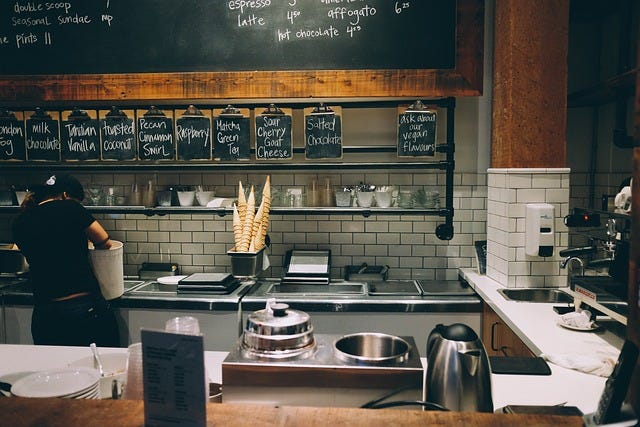Part of being a good chef is having the discipline to stick to a budget, however, with economic decline this can be a difficult task for even the most frugal chefs. Today we are going to take a look at how chefs are developing menus that don’t break the bank.
With budgets getting tighter and tighter chefs are learning to utilize parts of food that would normally be considered scrap such as celery leaves or carrot peelings. One of the ways that chefs have used “waste” in the past is by making stock or soup. Some vegetables that traditionally have been peeled are now being cooked and eaten without peeling in an attempt to cut down on food waste.
In a strong economy, restaurants may have access to a wider variety of fresh, high-quality ingredients and be able to experiment with innovative dishes but when the economy is on the downswing restaurants may need to be more resourceful and focus on using cost-effective ingredients or seasonal products.
Restaurant menus provide a unique window where we can understand the state of the economy. They are not static documents but rather dynamic reflections of the interplay between economic factors, consumer preferences, and industry trends.
Chefs are creating new dishes by utilizing food scraps in a different way than ever before. For example, deep frying potato peels are a great way to create a byproduct from something that would traditionally have been thrown away. Check out this tasty fried potato peel recipe that can be used as a savory topping to steaks and burgers but could also be served as an appetizer with a variety of sauces.
Inflation has a direct impact on restaurant menus. When inflation rises, restaurants can face increased costs for ingredients, labor, and overhead, or what is known as prime costs. To offset these rising prime costs, chefs and restaurant owners alike may implement price increases or market pricing for higher-priced items such as specialty fish and meat. Customers may also notice a reduction in portion sizes to maintain profitability. Some restaurants may opt for creative pricing strategies, such as adjusting menu prices based on the time of day or offering happy hour specials to attract customers during traditionally slower periods.
Restaurant menus also reflect ever-changing consumer preferences and health trends, which can be influenced by economic factors. Slow economic time causes consumers to prioritize value and affordability, leading to an increased demand for comfort foods or classic, familiar dishes. However, as the economy improves, there is often a shift towards healthier options and a greater emphasis on locally sourced, organic, or sustainably produced ingredients. In response, menus may feature more plant-based or vegetarian options, gluten-free alternatives, or allergen-conscious dishes to cater to changing consumer demands.
By analyzing the composition, pricing strategies, and trends within restaurant menus, one can gain insights into the prevailing economy. Maybe your burger went from being a 1/2 pound burger to a 1/3 pound burger which is only a couple of ounces of difference but day after day, week after week, those couple ounces add up to a few pounds a day and so on, that’s how a chefs mind thinks or should think if they are budget conscious.
On the other side, when times are prosperous you may see restaurant menus offering larger portions or shareable plates when they know that customers are willing to spend more.
In recent years, there has been a growing emphasis on ethical sourcing, sustainability, and supporting local communities. Restaurants may choose to highlight these practices on their menus to appeal to environmentally conscious customers. For example, they may indicate if ingredients are organic, locally sourced, or sustainably produced, demonstrating their commitment to social responsibility.
The economic downturn seems to affect smaller more independently owned restaurants more so than larger corporate chains due to several factors, including limited access to capital, less bargaining power with suppliers, and a more narrow customer base.
Smaller restaurants often have less established brand recognition and may struggle to compete with the marketing and advertising efforts of corporate chains so when faced with an economic downturn. These independent establishments may experience a more significant decline in sales, making it challenging to maintain their operations and stay in business. In the restaurant industry, just as with the economy there are always going to be ups and downs, this is something that chefs and customers alike are well aware of. It can be an unpredictable industry where success and challenges go hand in hand, sometimes it’s literally feast or famine.
From the exuberance of expansive menus during an economic boom to the adjustments made during economic downturns, the restaurant menu acts as a barometer of economic health, highlighting the adaptability and resilience of the restaurant industry in response to these changing economic times.








Here's where your kitchen OCD really gets to shine!
I've worked in very good kitchens, and not-so-good kitchens. Shrinkflation was certainly a theme at one of the not-great ones.